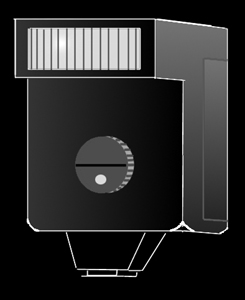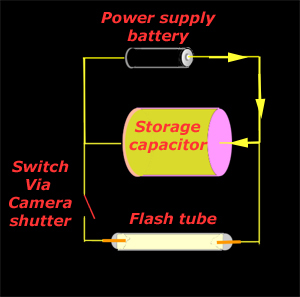Whether
of a SLR design or a compact
design, many modern 35 mm
cameras have a small flash
built into the unit. But small
flash units can be obtained
that can be attached to the
hot shoe of the camera. These
have an electrical connection
on the base that fires the
flash in sync with the shutter
of the camera. |

Move over image to view roll
over image
|
|

Move over
image to view roll over image |
Most
low powered portable flash
units use disposable AA batteries
or similar style of battery.
Some of these units have rechargeable
batteries that can be removed
in a power pack and charged
as a unit. The light out put
is usually related to the
size of the capacitor and
flash tube built into the
unit and indirectly related
to the size and weight of
the unit as a whole. |

Move over
image to view roll over image |
A
disadvantage of compact units
like this is that the photographer
has limited control over how
to control the light both
in direction and quality.
Some photographers might use
a piece of tissue paper over
the transparent front where
the tube is to diffuse the
light more. Or a piece of
white card can be attached
to the front of the unit to
direct the light in a different
direction. |
|
Schematic
diagram of a flash circuit.
The electrical charge is stored
in the capacitor and discharged
when the camera shutter is
released. The same circuit
is used for all flashed with
modifications for more specialized
equipment. To keep the capacitor
at peak performance, it is
wise to charge it ones every
month or so.
The
flash tube is often U shaped
or circular to save space
and sits against a polished
reflector to direct as much
light as possible onto the
subject.
|

Move over
image to view roll over image |